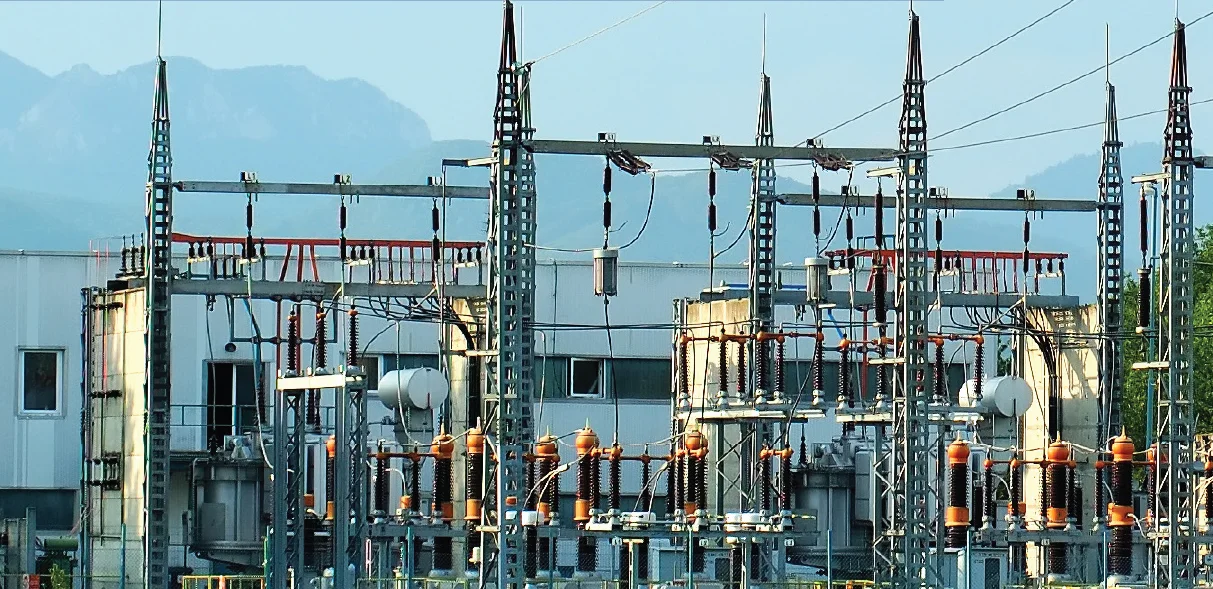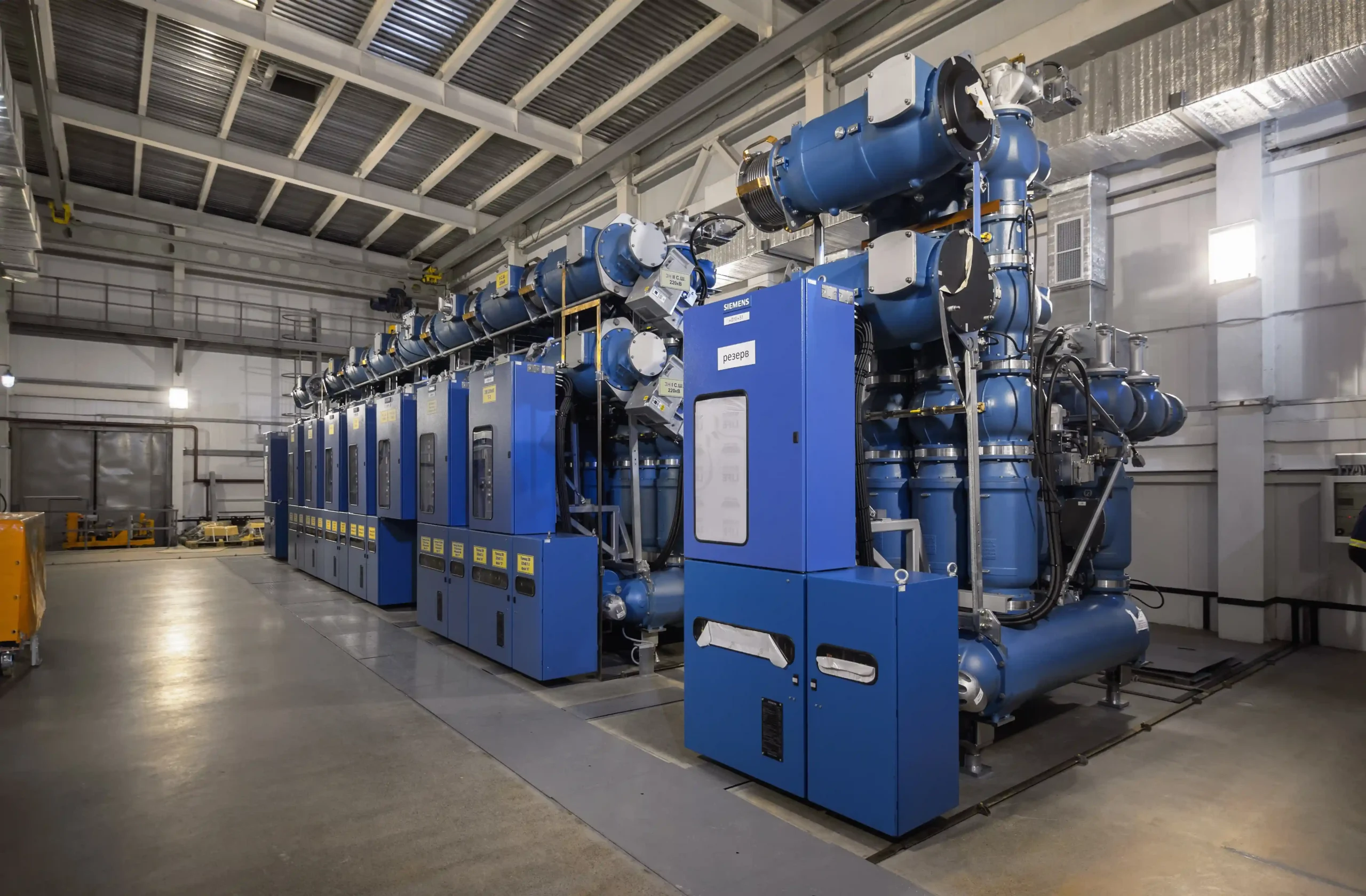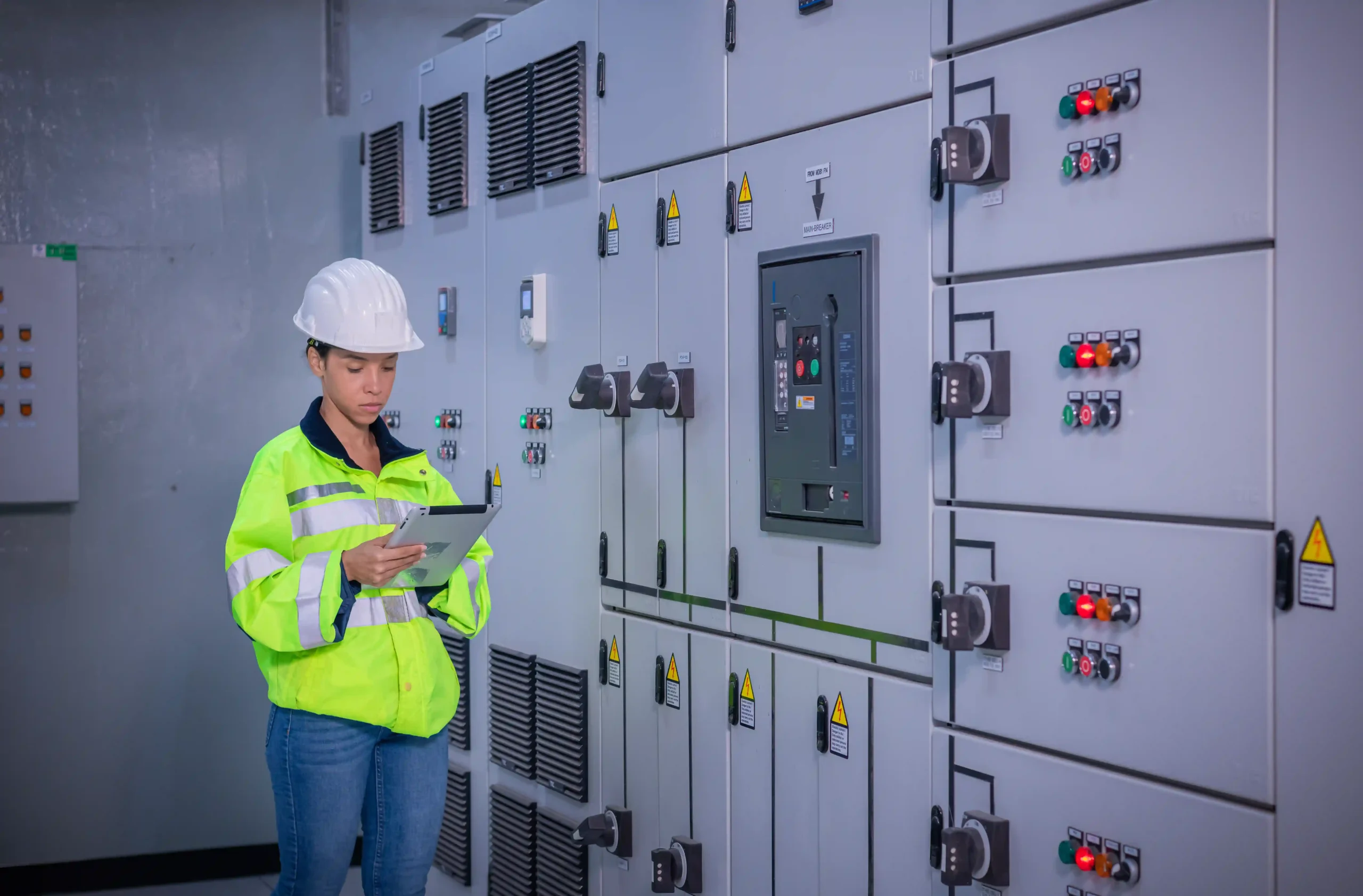res fThe modern electrical grid is undergoing a rapid transformation. With rising urbanization and an increasing need for resilient, low-footprint infrastructure, choosing between air-insulated switchgear (AIS) and gas-insulated switchgear (GIS) has become more critical than ever. While both are essential in substations, AIS typically requires more physical space, whereas GIS is compact and relies on Sulfur Hexafluoride (SF₆) gas.
According to the U.S. Environmental Protection Agency (EPA, 2023), SF6 is a potent greenhouse gas with a global warming potential (GWP) of 23,500, which is significantly higher than CO₂, and it remains in the atmosphere for more than 3,000 years.
Despite these environmental considerations, utilities continue to prioritize several practical factors when selecting switchgear technology, including:
- Capital and operating costs
- Long-term reliability and safety risks
- Effectiveness of asset monitoring and maintenance
This blog breaks down the differences between AIS and GIS and identify which switchgear type is best suited for your specific application.
What is Air-Insulated Switchgear (AIS)?
AIS uses ambient air as the insulating medium around its conductors, busbars, and switching components. It is designed to control, protect, and isolate electrical equipment across medium- and high-voltage networks, ensuring safe power distribution and fault interruption. AIS is widely deployed in substations and outdoor switchyards where space is available, and ease of maintenance is a priority.
key Advantages of AIS:
- Initial cost is low compared to GIS or sealed systems.
- Easier to expand by adding bays or breakers in the AIS switchyard
- Simple handling with no gas or specialized enclosures
Drawbacks:
- Requires significantly more space than GIS
- Maintenance is more frequent to inspect
- Exposed to environmental factors
What is Gas Insulated Switchgear (GIS)?
GIS is a compact switchgear in which all primary components are enclosed within sealed, metal-clad compartments filled with SF₆ insulating gas, rather than relying on ambient air. The use of SF₆ gas provides extremely high dielectric strength, allowing the system to safely insulate and protect critical components such as circuit breakers, disconnectors, and busbars. GIS is primarily deployed in medium- and high-voltage applications where space constraints are significant and high reliability is required.
Key Advantages of GIS
- GIS occupies less space than AIS, due to its compact size
- Sealed enclosure protects internal elements from environmental exposure
- Enhances safety as live components are encapsulated
- Requires lower routine maintenance
Drawbacks:
- Higher initial CAPEX due to specialized components and gas handling
- SF6 gas poses significant environmental risk if leaked or decomposed
- Expansion of the GIS system is costly due to complex modular units
- Maintenance or gas handling requires highly trained professionals.
Difference between AIS vs GIS
Here is a brief comparison of key dimensions when evaluating AIS vs GIS:
| Dimension | AIS (Air-Insulated) | GIS (Gas-Insulated) |
| Footprint / Switchyard Layout | Requires large space, open-air switchyard | Compact, ~20–30% of AIS footprint in many designs |
| Initial Cost | Lower procurement cost; simpler civil works in some cases | Higher due to gas handling, modular construction |
| Maintenance | Frequent inspections; exposed parts need care | Longer intervals, lower hands-on maintenance |
| Reliability / Safety | Vulnerable to environment; higher risk of pollution-induced faults | Sealed compartments reduce arc-flash risk and external influences |
| Environmental Impact | Low-GWP medium (air), but large land use | Uses SF₆ gas (high GWP); risk of leaks and decomposition |
| Scalability | Easier to expand in open-air switchyards | More complex modular scaling; must handle additional gas modules |
| Applications | Utilities with land, industries, and rural substations | Urban, offshore, underground, high-criticality substations |
This AIS vs GIS comparison shows why choosing between the two depends heavily on environment, budget, and long-term reliability needs.
Which is better, AIS vs GIS?
There is no universal winner. The right choice depends entirely on your application requirements, whether it is electrical, operational, or commercial. Both technologies are proven, but each serves a different purpose. Before choosing any switchgear, the operator should be clear about what they expect from their system.
Here are some of the steps that utilities and industrial users rely on when choosing between AIS and GIS:
- Define System Requirements: Set system voltage level, power capacity, short-circuit rating, protection needs, and switching duties.
- Assess Site and Space Constraints : Check land availability, indoor/outdoor feasibility, environmental exposure, and expansion needs.
- Establish reliability & maintenance approach : Decide expected uptime, redundancy (N-1, N-2), and your preferred maintenance model
- Analyze the total cost of ownership: Compare equipment and installation costs including long-term maintenance and environmental costs.
- Ensure safety & regulatory compliance: Check for SF₆ gas compliance and leak regulations, arc-flash safety expectations, and internal engineering standards (IEC/IEEE, utility norms).
- Score AIS vs GIS and select : After comparing technical + commercial parameters, choose one based on:
-
- Site constraints
- Lifecycle economics
- Risk tolerance
- Expansion plans
- Operational reliability
Select the option with the highest weighted score.
Once the switchgear type is selected, the next priority is ensuring that the asset operates safely and reliably throughout its lifecycle. Regardless of whether a utility chooses AIS or GIS, the long-term performance of the installation depends heavily on how well the equipment is monitored and maintained.
Why Condition Monitoring Is Critical for Both AIS and GIS?
AIS and GIS failures are rare, but when they occur, they can be catastrophic as many failure modes cannot be detected through periodic manual inspections. Utilities are shifting from scheduled maintenance to continuous, real-time switchgear condition monitoring to address this challenge and ensure reliable, efficient power network operation.
AIS condition monitoring
The installations for AIS are exposed to the environment, making AIS monitoring essential for:
- Partial discharge (PD) detection from contamination, aging, or loose connections
- Thermal hotspots due to conductor oxidation or mechanical degradation
- Environmental conditions, such as humidity, dust, and moisture ingress
- Early detection of insulation breakdown in open-air components
AIS condition monitoring reduces outage risks in large outdoor switchyards, where manual inspections alone may miss early warning signs.
GIS Condition monitoring
The failures for GIS are less frequent, but when they do occur, the impact is far more severe because components are sealed and harder to inspect.
GIS condition monitoring focuses on:
- SF₆ gas leakage monitoring to prevent insulation loss
- High-sensitivity internal PD detection
- Stress and aging analytics for long-term insulation performance
In both AIS and GIS switchyards, real-time monitoring builds a layer of reliability that manual testing can’t match. As these monitoring demands continue to rise, utilities need a platform that can reliably support both technologies without increasing operational burden.
How Rugged Monitoring Supports Both AIS and GIS Strategies
Rugged Monitoring’s platform is built around real operational needs. This helps utilities and industries move from reactive maintenance to predictive or condition-based strategies.
Our solutions help operators:
- Track temperature and SF6 gas leakage in real time for GIS
- Detect and trend PD activity in both AIS and GIS
- Convert raw data into health indicators and actionable insights
- Retrofit existing switchgear without disrupting operations
Whether the objective is extending life, improving reliability, or preparing for remote operations, monitoring transforms switchgear into an intelligent, manageable asset.




